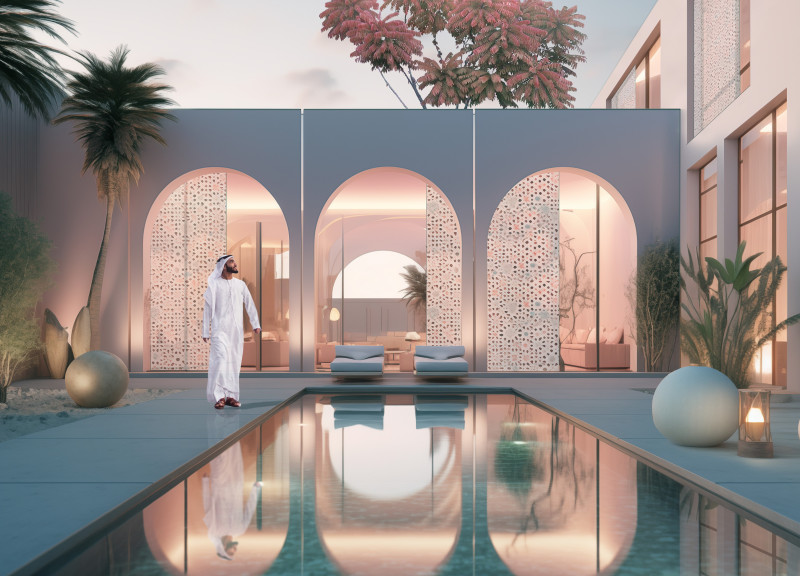5 key facts about this project
## Overview
Located in Dubai, the project addresses contemporary social and environmental challenges by merging traditional and modern architectural elements. Its objective is to create a living environment that encourages social interaction and reflects cultural identity while adhering to sustainable practices. The design framework not only emphasizes individual privacy but also fosters connections within the community, providing a robust response to urban sprawl and disconnection.
## Spatial Organization
The layout features a central courtyard at the heart of each residence, inspired by traditional Arab architecture. This design strategy facilitates a balance between communal and private spaces. Communal areas include a pool, majlis, and gardens, promoting social engagement. Private zones ensure family privacy while maintaining an interconnected spatial experience that cultivates a sense of belonging. This arrangement supports both communal activities and individual needs, offering flexible living arrangements for evolving family structures.
## Material Selection and Sustainability
Locally sourced materials play a key role in the design, enhancing cultural resonance and supporting environmental sustainability. Concrete provides structural integrity, while extensive use of glass maximizes natural light and establishes a connection with outdoor spaces. Natural stone contributes to thermal comfort, and wood adds warmth to interiors. The incorporation of traditional mashrabiya not only provides functional shading but also enhances airflow and aesthetic continuity. This combination of materials reinforces the project's sustainability features, including a U-shaped design that minimizes sun exposure and promotes natural ventilation, aimed at reducing energy consumption.
The integration of landscaped areas with native plants and productive gardens further enhances the relationship between indoor and outdoor environments, supporting sustainable living practices while improving residents' quality of life.





















































